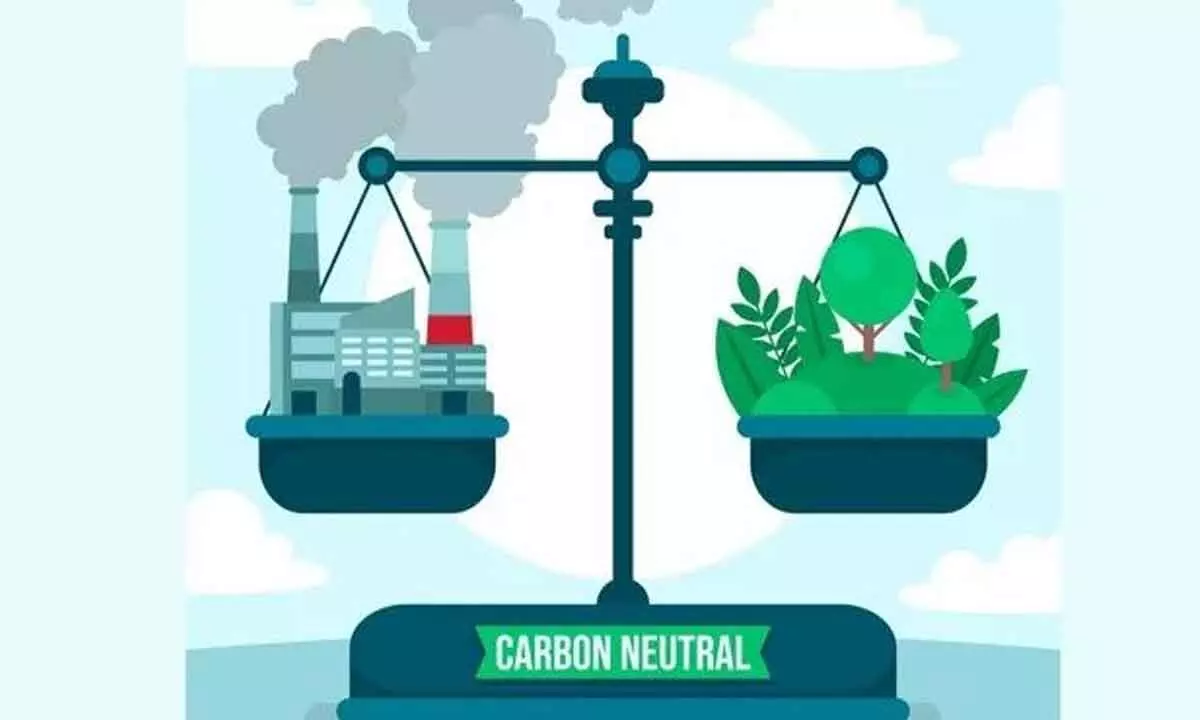Live
- Priyanka will now be seen in Wayanad more often: Robert Vadra
- Cong won all 3 seats on basis of guarantees, development: Dy CM on K’taka bypolls
- Santosh Trophy: Odisha rout Chhattisgarh to make final rounds
- BJP hijacked electoral machinery for securing victory in Maharashtra: Cong
- Formula 1: Russell pips Sainz to take pole in Las Vegas GP
- India under Trump 2.0 could bolster its position in global supply chains
- People voted for ideology, rejected dynasty: Sudhanshu Trivedi on Maha victory
- AP, Telangana to receive rains for next three days as low pressure to turn depression
- Kailash Gahlot inducted into BJP’s Delhi election panel
- With state elections over, Indian stock market heads for stability
Just In

It is hoped that soon there will be an internationally negotiated agreement for an official carbon market
The climate change crisis has now reached every country; extreme weather events are costing all economies. It is clear that the world is failing by many marks to reduce greenhouse gas emissions. So, the idea that is gaining traction, once again, is to build a carbon market that will allow countries and companies to buy credits by doing all things good—from planting trees to distributing clean cookstoves to investing in renewable energy. This market would put a price on every tonne of carbon dioxide or the equivalent greenhouse gas avoided, reduced or sequestered, which can then be used to offset emissions of companies and countries.
It is simple in some ways; complicated in others. Because of this carbon market, you will be able to pick up a luxury bag that is labelled “carbon-neutral”; or take a flight that has “offset” your emissions; or even read about an oil or food company that has declared a “net-carbon footprint”. You may wonder how. These items and companies become carbon-neutral by “buying” credits—these credits are issued against activities that either reduce greenhouse gas emissions (like building a solar plant or using an efficient cookstove) or remove greenhouse gases from the atmosphere (for instance, by planting trees). The management of this “market” of buyers and sellers is done through a paraphernalia of registries, project developers, validators, verifiers and carbon exchanges.
The idea of carbon credit began in the first decade of the 2000s, after the Kyoto Protocol, set up under the UN Framework Convention on Climate Change (UNFCCC), entered into force. Countries agreed to set up the Clean Development Mechanism (CDM) for the purchase of carbon credits from developing countries. But with the end of the Kyoto Protocol, this market dried up. It was replaced by an unregulated global market of buyers and sellers, called the voluntary carbon market.
It is hoped that soon there will be an internationally negotiated agreement for an official carbon market. At the next Conference of the Parties (COP28) to the UNFCCC to be held from November 30 to December 12, discussion on the Article on creating the rules for the carbon market (Article 6 of the Paris Agreement of 2015) is top billed. Once these rules are finalised, there will be a public registry of all projects and countries will be allowed to trade either bilaterally (under Article 6.2) or through a global programme like what existed earlier under CDM (under Article 6.4).
This is an important way to move ahead. Countries, including India, need financing to transition to a low-carbon energy system, and the buying and selling of carbon credits will provide that investment. Communities—often impoverished and also the worst victims of climate change—could also benefit greatly from these financial transfers. Imagine these communities planting trees and getting paid for their land and labour through carbon credits for the carbon dioxide these trees would store! It is a win-win scenario.
The question is if the voluntary carbon market, run today by the private industry, is working for people and for the planet. My colleagues at Down To Earth and the Centre for Science and Environment examine this and find there is much that needs to be done to set this market in order. In fact, it is a can of worms. This is not what we need in this time of existential crisis.
(Courtesy: Down
To Earth)

© 2024 Hyderabad Media House Limited/The Hans India. All rights reserved. Powered by hocalwire.com







